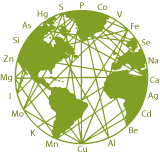Toxicological Profile and Facts
Potential Source of Exposure
Tin is a soft, white, silvery metal that is insoluble in water. Tin metal is used to line cans for food, beverages, and aerosols. It is present in brass, bronze, pewter, and some soldering materials.
Inorganic tin compounds are found in small amounts in the earth's crust. They are also present in toothpaste, perfumes, soaps, coloring agents, food additives, and dyes. Tin compounds are used in making plastics, food packages, plastic pipes, pesticides, paints, wood preservatives, and rodent (rats and mice) repellants.
Tin can be found in the air, water, and soil near places where they are naturally present in the rocks, mined, manufactured, or used. In general, organic tin compounds are from human-made sources and do not occur naturally in the environment.
Because inorganic tin compounds usually enter and leave the body rapidly after you breathe or eat them, they do not usually cause harmful effects. However, humans who swallowed large amounts of inorganic tin in research studies suffered stomachaches, anemia, and liver and kidney problems. Studies with inorganic tin in animals have shown similar effects to those observed in humans. There is no evidence that inorganic tin compounds affect reproductive functions, produce birth defects, or cause genetic changes. Inorganic tin compounds are not known to cause cancer.
IS THERE A MEDICAL TEST TO DETERMINE WHETHER I HAVE BEEN EXPOSED TO TIN AND TIN COMPOUNDS?
Tin can be measured in blood, urine, feces, and body tissues, incl hair or nails and normally, small amounts of tin are found in the body because of the daily exposure to small amounts in the food. Tin can also be measured in water.
Source: https://www.atsdr.cdc.gov/toxprofiles/tp55.pdf
